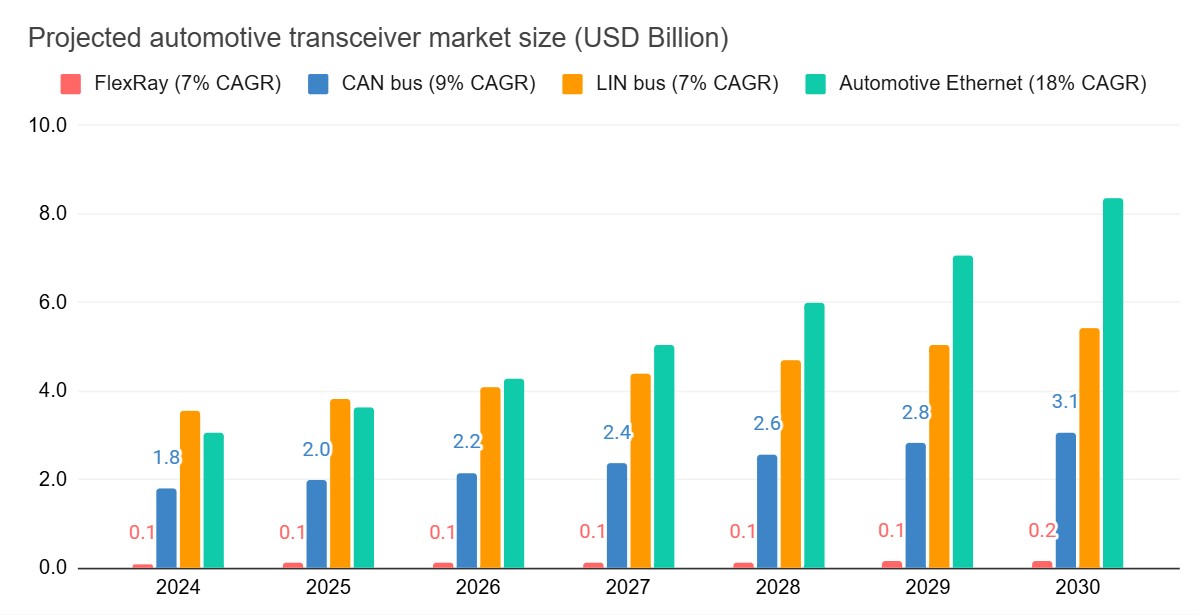LIN bus (Local Interconnect Network) is a cost-effective serial communication protocol used in automotive and industrial applications. This guide provides a detailed overview of LIN bus, comparing it to CAN bus, exploring its architecture, message frame, applications, and future trends.
LIN Bus vs. CAN Bus: Key Differences
LIN bus is often seen as a supplementary protocol to CAN bus (Controller Area Network), offering a simpler and cheaper solution for less critical systems. Here’s a comparison:
- Cost: LIN bus significantly reduces costs due to simpler wiring, cheaper nodes, and no licensing fees.
- Wiring: LIN uses a single wire with a ground return, while CAN employs a twisted pair of wires.
- Speed: CAN bus supports much higher data rates (up to 1 Mbit/s) compared to LIN bus (up to 20 kbit/s).
- Architecture: LIN bus operates on a master-slave architecture with a single master controlling up to 15 slaves. CAN bus allows for multiple nodes with equal priority.
- Applications: LIN bus is ideal for applications like window control, seat adjustment, and lighting, where real-time performance is not crucial. CAN bus is preferred for critical systems like engine control and safety features.
LIN Bus Architecture and Communication
LIN bus utilizes a master-slave architecture where a single master node controls the communication with up to 15 slave nodes. Communication is deterministic, meaning the master schedules all data transmissions, eliminating the need for arbitration as seen in CAN bus. This predictable timing makes LIN bus suitable for applications requiring guaranteed latency.
The LIN message frame consists of a header transmitted by the master and a response from the designated slave. The header includes a sync break, sync field, and protected identifier (PID). The response contains the actual data payload and a checksum for error detection.
LIN Bus Applications in Automotive and Beyond
Predominantly used in the automotive industry, LIN bus finds applications in various vehicle systems:
- Body Control: Window lifts, door locks, mirror adjustments, seat controls
- Climate Control: HVAC systems, temperature sensors
- Lighting: Headlights, interior lights, ambient lighting
- Powertrain: Sensors for position, speed, and pressure in non-critical areas
Beyond automotive, LIN bus is also employed in:
- Home Appliances: Washing machines, refrigerators
- Industrial Automation: Controlling simple machinery and sensors
LIN Bus Protocol Layers and Standards
LIN bus adheres to the ISO 17987 standard, which defines its functionality across different layers:
- Physical Layer: Specifies the single-wire communication medium and signaling characteristics.
- Data Link Layer: Defines the frame format, scheduling, and error detection mechanisms.
- Transport Layer: Handles the segmentation and reassembly of larger messages for diagnostics.
- Application Layer: Dictates the specific functionality and data interpretation for different applications.
The Future of LIN Bus
Despite the emergence of newer technologies, LIN bus is expected to remain relevant due to its cost-effectiveness and simplicity. The growing demand for features in modern vehicles and industrial systems necessitates a low-cost solution for less critical functions, ensuring LIN bus a continued role. Future developments focus on enhancing security and improving its integration with other communication protocols.
 automotive-transceiver-market-size-2024-2030-can-lin-flexray-ethernet
automotive-transceiver-market-size-2024-2030-can-lin-flexray-ethernet
Conclusion
LIN bus offers a robust and economical solution for networked communication in a variety of applications. Its simplicity, low cost, and deterministic behavior make it ideal for non-critical systems requiring predictable performance. While technologies like CAN bus and Automotive Ethernet handle high-speed, real-time tasks, LIN bus continues to play a vital role in modern vehicles and industrial automation, ensuring cost-effective implementation of numerous functionalities.

